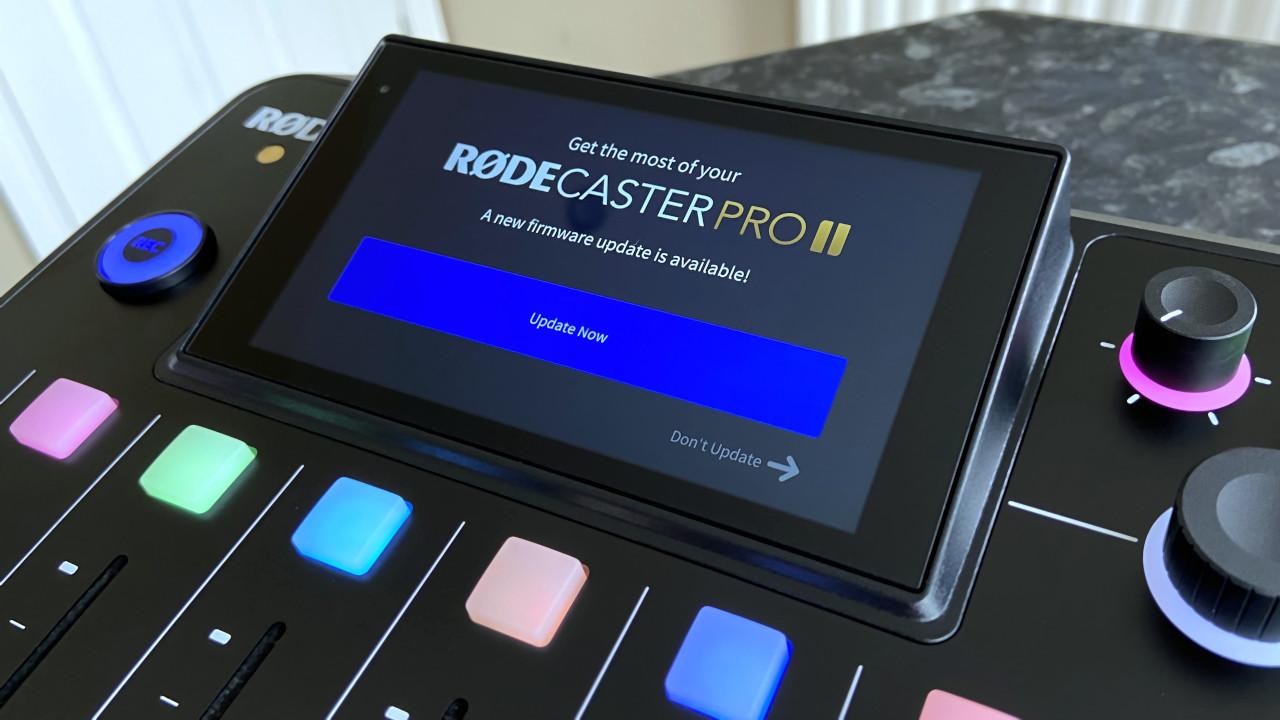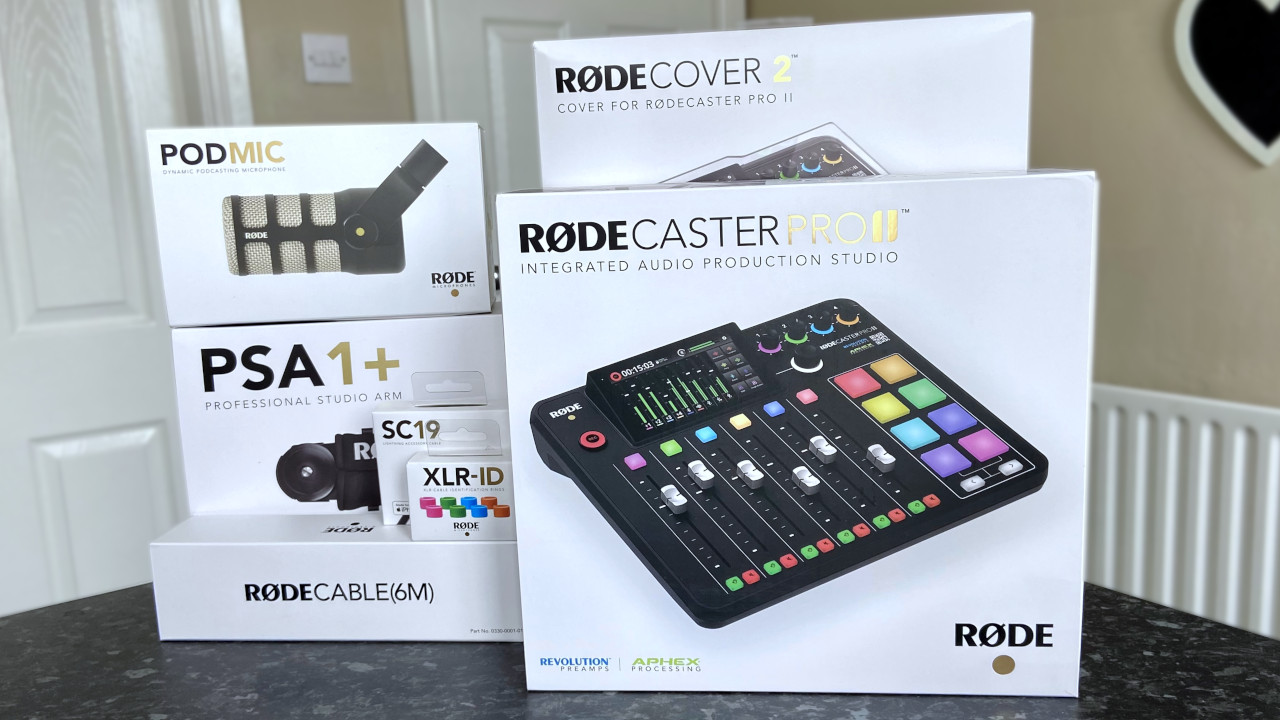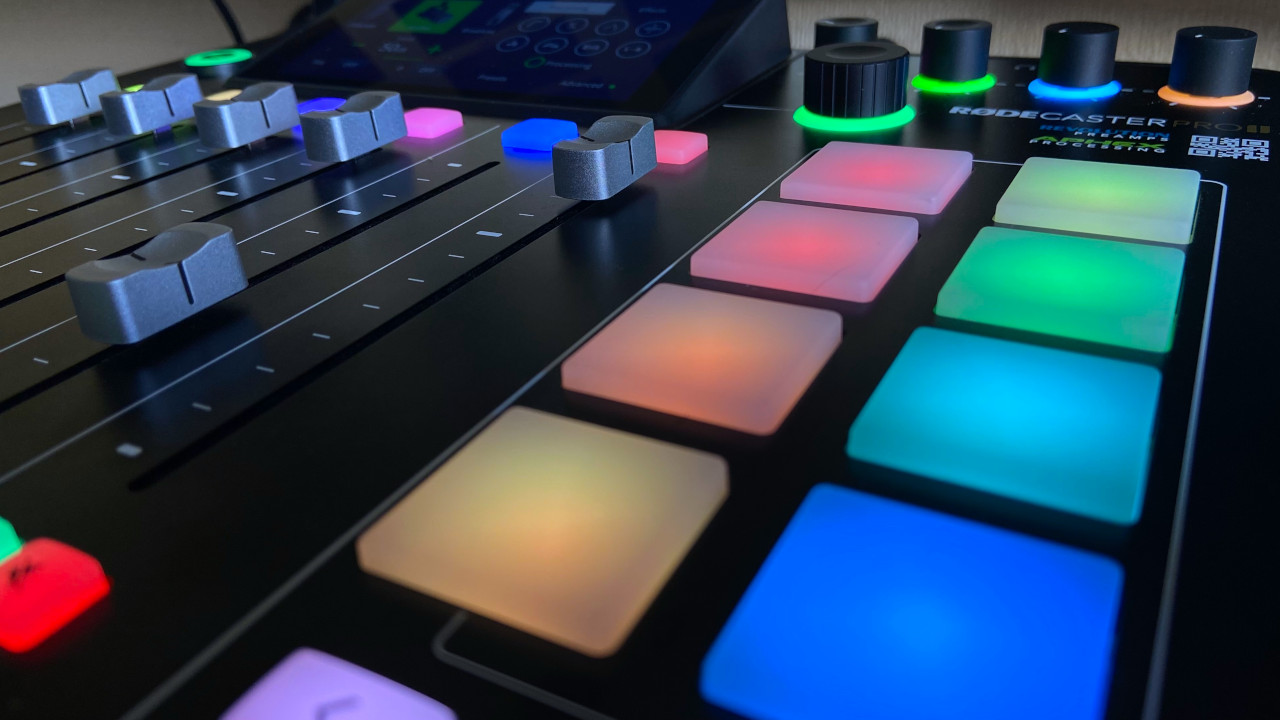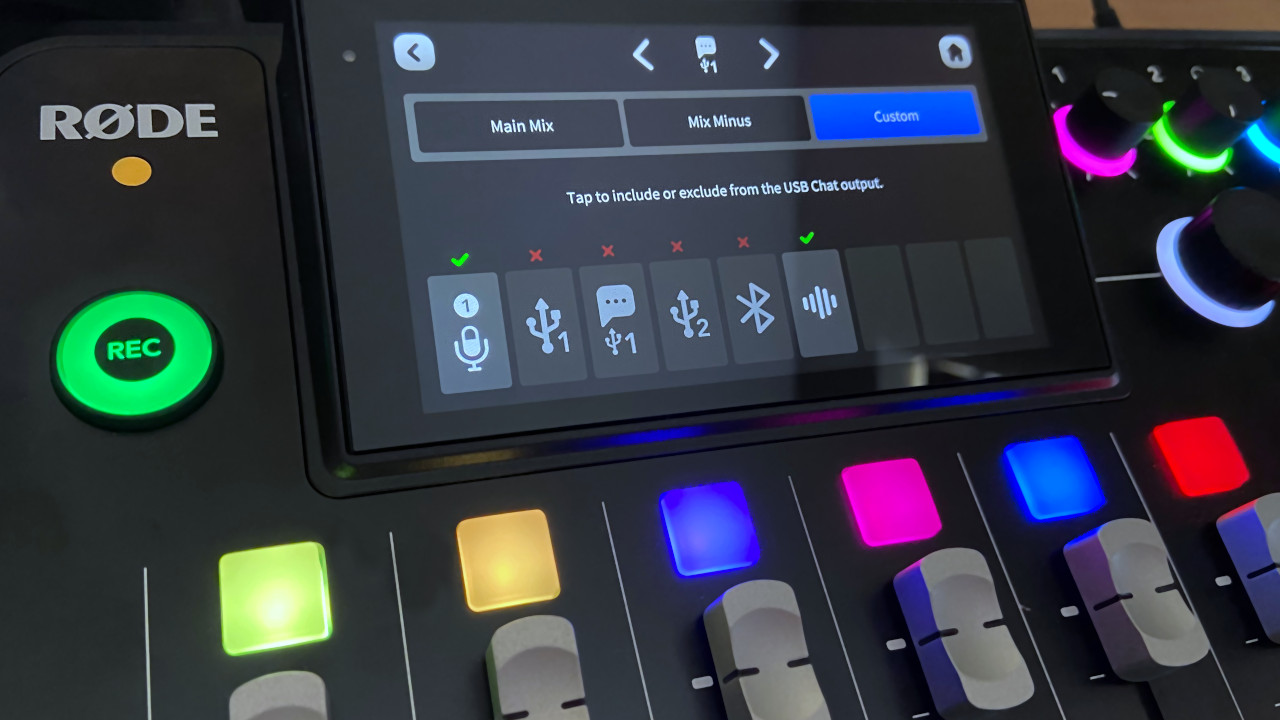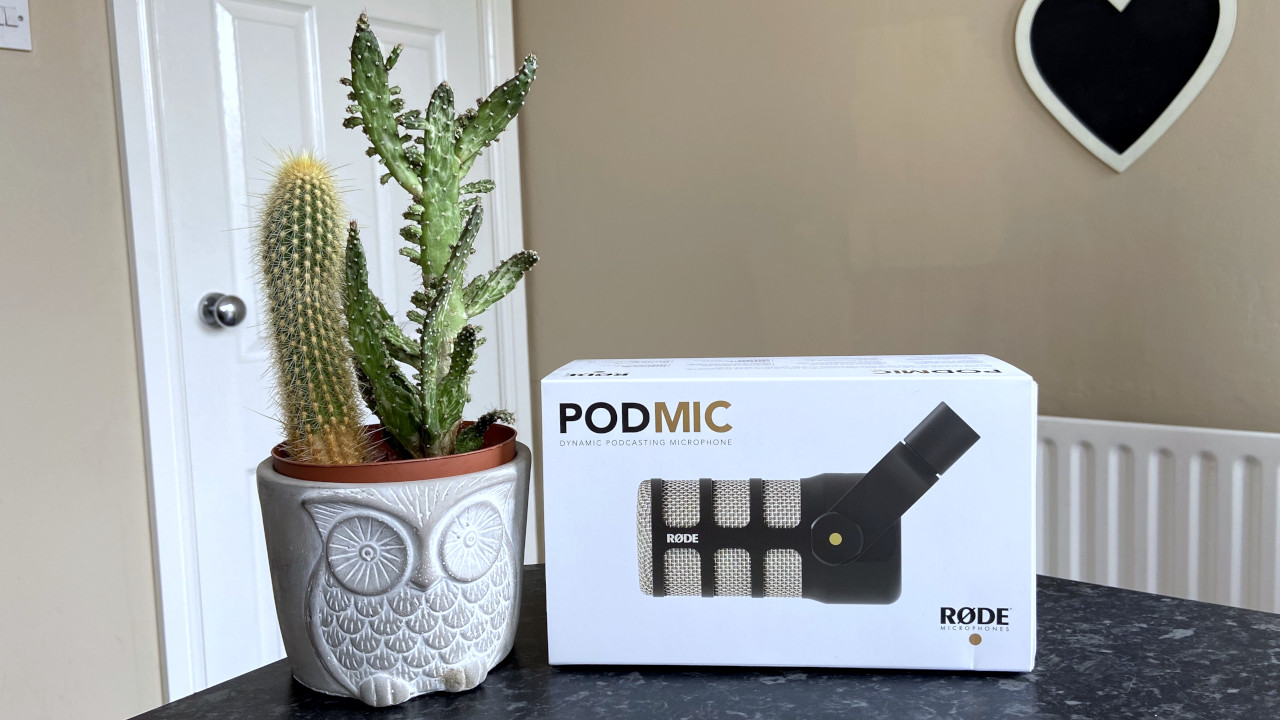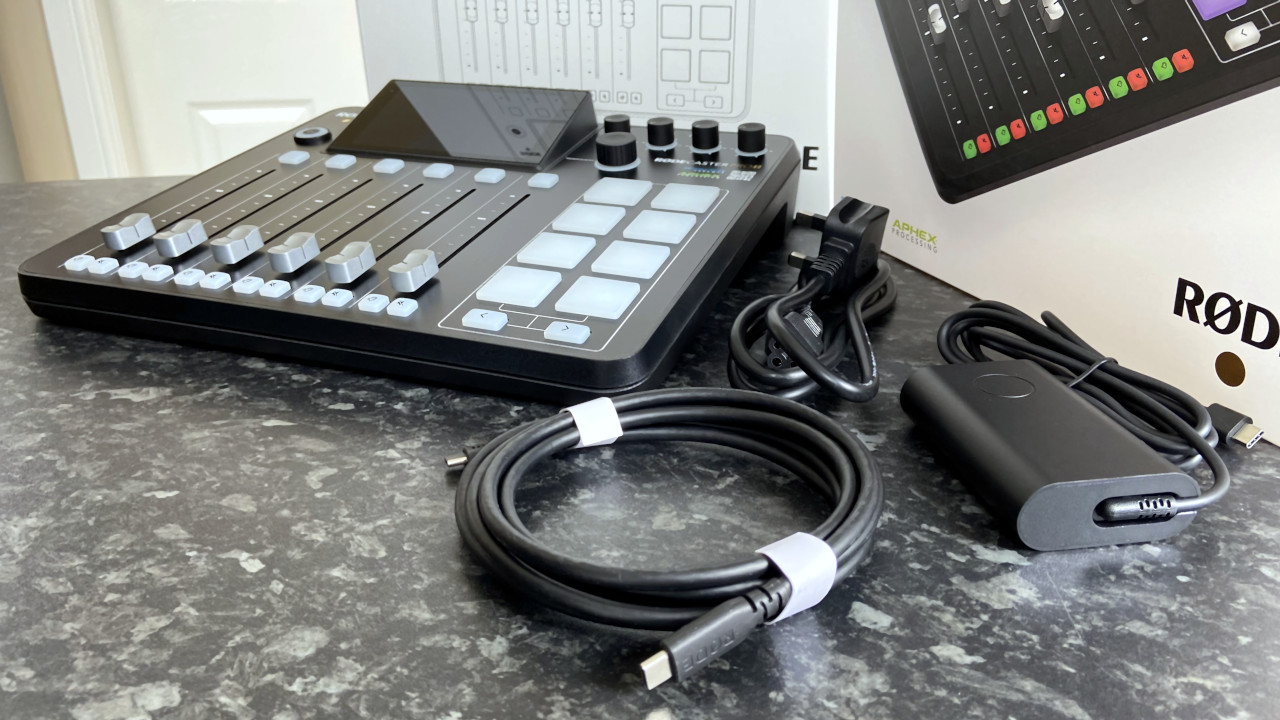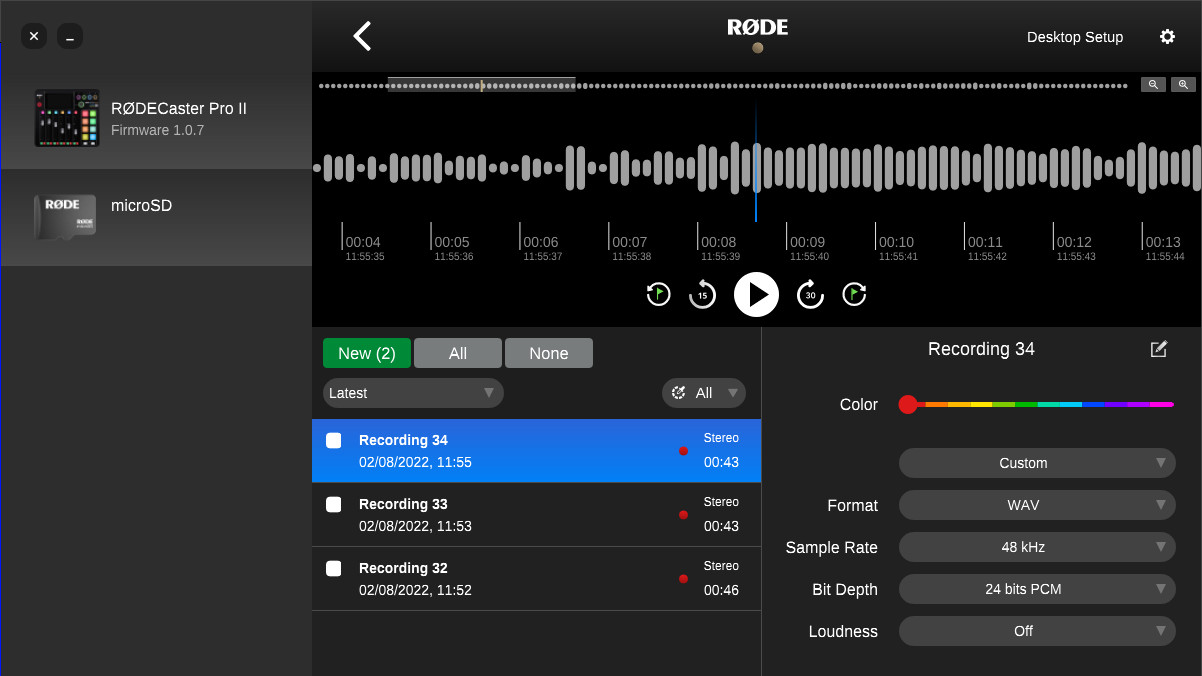Windows Central Verdict
The Rodecaster Pro II brings more than just a cosmetic upgrade to its predecessor, with heaps of incredible functionality hidden inside. Versatile faders combined with custom audio routing mean the sky is the limit for content creators. Podcasters, gaming live streamers, at-home musicians, and many more will benefit from this fantastic portable studio if they have the patience to learn how everything works.
Pros
- +
Customizable physical and digital faders
- +
High-quality audio equalizer and effects
- +
Companion software makes for easy transfers
Cons
- -
Tricky for beginners
- -
No passthrough power for iOS devices
Why you can trust Windows Central
Anyone looking to start a podcast, level up their live stream, or record music will need something to handle high-quality audio. Rode offers the Rodecaster II Pro audio production studio designed for content creators. It includes analog inputs and outputs, USB-C for digital connections compatible with Windows, and various built-in controls for a professional-grade mix.
It's also reasonably portable since a PC isn't mandatory; some XLR microphones and expanded storage are all that's needed to put on a show. Rode sent us a package with everything you need to start, so I spent the weekend taking it through various tests for this Rodecaster II Pro review.
Rodecaster Pro II: Price, availability, and specs
Rode sells the Rodecaster Pro II integrated audio production studio through major third-party retailers, including Amazon, Best Buy, and Walmart, for a $699 MSRP. Compatible with most analog XLR microphones and 1/4" headphones, the box contains an AC power adapter and 1x Rode SC27 USB-C to USB-C cable.
Find detailed specifications below for more information.
| Category | Specification |
|---|---|
| Analogue input | 4x combo XLR |
| Analogue output | 2x balanced line, 4x 1/4" headphones |
| Equivalent noise | -131.5dBV (A-weighted) |
| Frequency | 20Hz-20kHz |
| Gain range | 0-76dB |
| Microphone impedance | 4KΩ |
| Instrument impedance | 1MΩ |
| Line output max level | 4dBu |
| Headphone output power | 250mW |
| Storage | 4GB internal |
| Connectivity | 2x USB-C, Bluetooth |
| Expansion | microSD, USB-C storage |
| Network | Wi-Fi 802.11g/n/ac 2.4GHz + 5GHz, Ethernet 100/1000 |
| Dimensions (mm) | 305(L) x 270(D) x 60(W) |
| Weight | 1.96kg |
Rodecaster Pro II: What's good
My first impressions of the Rodecaster Pro II were pretty fantastic, thanks to the beautiful packaging and presentation out of the box. Rode advertises the most appropriate accessories inside the lid if you're still debating a new microphone or headphones at this point. For contents, there's nothing besides the unit itself, an AC adapter, and a USB-C cable. A printed QR code links to a digital user guide, seemingly skipping paper instruction manuals altogether, which I'll get into later.
The device is reasonably chunky, though smaller than the first model, with a high-quality feel in its combination of metal and sturdy plastic construction. Connecting the Rodecaster Pro II to power had all the LEDs fire up like multi-colored holiday decorations, alongside the vibrant 5.5-inch touchscreen displaying its logo before starting a setup wizard. It reminds me that this feature-rich console has built-in Wi-Fi, checking for updates and installing the latest firmware, version 1.0.7.
Setting up an impromptu studio in my kitchen, I attached the Rode PodMic to a PSA1+ arm mount and connected it to the Rodecaster Pro II with an official Rode XLR cable. You can use any compatible microphone and accessory of your choosing, like the Movo VSM-7 XLR. While this kind of equipment might seem daunting initially, you can't go wrong since each port is clearly labeled, and I was ready for basic recording in no time.
All the latest news, reviews, and guides for Windows and Xbox diehards.
While the Rodecaster Pro II includes 4GB of internal storage for default sound effects, I recommend inserting a microSD card or connecting a USB-powered hard drive to save your recordings. Not only for the space itself, but the convenience of moving project files from the studio to a compatible device is too helpful to pass up. You can quickly transfer files from any connected storage to your PC if you connect via a USB cable, but it's not strictly necessary.
A microSD card or USB drive is recommended to move project files from the studio.
This studio can perfectly set up an entire podcast show without ever needing to connect to a computer, something that becomes evident as I start exploring the touchscreen menus and tapping at the colorful smart pads.
Various comedic soundbites, generic elevator music, and a collection of live equalization effects are already set up. After a few minutes of giggling at pitch-shifting my voice and fading channels, it was time to see what this studio could do.
Since Rode stuck with the Aphex suite for the Rodecaster Pro II, the potential for audio processing is practically endless. Heading into the advanced settings for any of your chosen channels unveils individual filters, compressors, and plenty of others. Having all these specific settings at your disposal might be a little overwhelming, so there's a basic three-stage mode for adjusting depth, sparkle, and punch that modifies everything at once.
Anyone can dive as deep as they like, with musicians perhaps more likely to explore these filters than your average live streamer, but experimenting is no harm. You can reset everything to its defaults, so I spent a few hours tweaking and listening to each microphone effect, monitoring in real-time. After spending a significant amount of time with this studio, I started to understand its incredible potential for content creators.
Using the Rodecaster Pro II standalone with little else added besides a microSD cable is ideal for creating a podcast on the go. Although it's not the most petite unit, there's no reason you couldn't travel with it stored in appropriately sized luggage alongside a set of microphones and headphones, ready to record wherever you are.
The same portability applies to musicians; if you can connect to AC power, you can connect your instruments, microphones, and whatever else to the multi-use analog inputs. There are already high-quality Rode Revolution preamps inside the Rodecaster Pro II, so you can at least cut down on some traveling hardware and focus instead on recording separated tracks quickly, ready for editing later.
Routing audio might not be a walk in the park, but I'd never want to go back to doing everything manually.
My primary test was mixing audio during gaming livestreams. For a total novice, it might not be a walk in the park to figure out exactly how to route the audio the way you want. Still, the outcome provides such incredible convenience that I'd never want to return to doing everything manually.
With six physical and three virtual faders available, there's plenty of space to separate incoming and outgoing audio. With the Rode PodMic set to the first channel, Windows can identify separate sources for a full mix and microphone-only chat, so I could decide which faders my friends can hear over Discord voice chat software.
Separating voice chat and PC audio means that the second and third channels divide game sounds from communications, saving the need to adjust the volumes of whoever might be talking individually. Both USB-C ports can connect to the same PC, meaning my stream bot software also has a fader, playing chat-enabled sounds and text-to-speech commands.
Add to that a Bluetooth connection to my phone on the fifth fader, deciding whether or not to monitor unheard music or to take an on-air phone call. Finally, the sixth physical fader contains the smart effects pads volume for whenever I feel like triggering a comical sound or activating a live voice effect.
All this still leaves three digital faders, accessible via the 5.5-inch HD touchscreen, feeding haptic response, and adjustable with its own physical rotating knob and button. The potential for customizable functions on the Rodecaster Pro II becomes more evident as you use it, and I imagine different use cases every day. It would be perfect for any content creator once they learn how everything works.
Rodecaster Pro II: What's not so good
I spent plenty of time debating whether the things I disliked about the Rodecaster Pro II were genuine reasons to dock its score. To its credit, the mechanical downsides to this studio are mostly trivial, and the others are more about my personal experience.
To explain, it begins with the lack of a physical instruction manual in the box. Of course, an ever-expanding guide is available online, and Rode even includes a QR code that you can scan during unboxing to access it quickly. It makes perfect sense to see the upgrades brought about by firmware updates, and a paper manual would soon be outdated.
My lack of audio engineering expertise caused the only real frustrations, hampered by my self-taught methods gathered from years of hacking together software to force the desired result. Instead, anyone with formal or self-taught audio production education will find concepts like mix-minus much easier to understand when it comes to routing audio. Reading through the official guide clarifies everything, and I can't overstate its importance.
To their credit, Rode has significantly upgraded the Rodecaster Pro II with firmware updates and changes to its online guide. Custom routing came as part of a recent patch, and though it feels like it should have been there from the beginning, seeing it added post-launch leaves me feeling easy about the future of this hardware.
There's no charging function when using the SC19 USB-C to Lightning cable, and it's purely used for listening to sound from your iPhone or iPad.
Rode sent me their SC19 USB-C to Lightning cable since the Rodecaster Pro II is MFI certified for use with Apple products. It was disappointing to find there's no passthrough charging function when using this cable, and it's purely for listening to sound from your iPhone or iPad.
I didn't use it for long since connecting my phone via Bluetooth offers more functionality and frees up the second USB port for my PC. The usefulness of connecting an iOS device will depend on your use case, perhaps for performing live music, but it hardly seems worth it compared to the alternatives.
Rodecaster Pro II: The competition
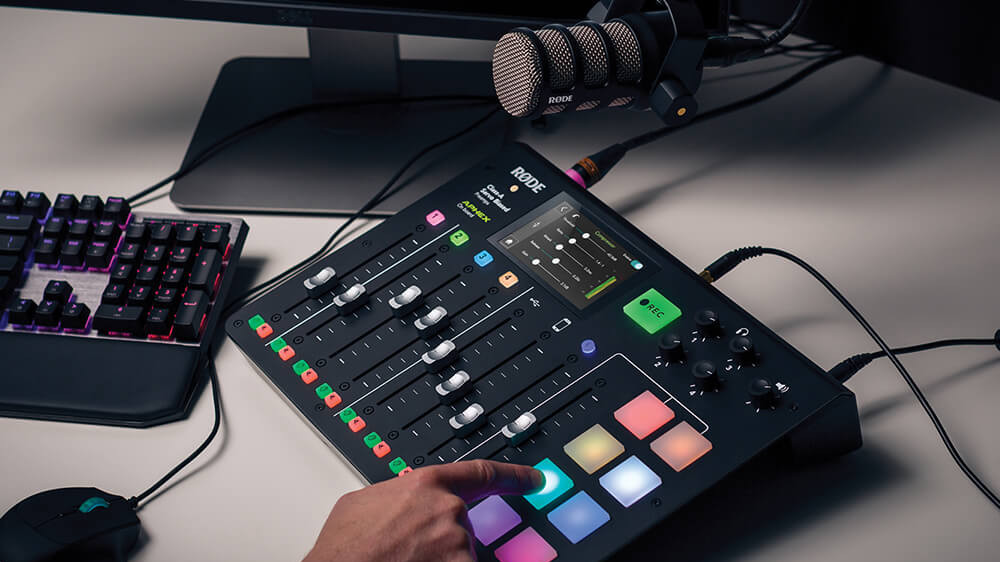
The most significant competitor to the Rodecaster Pro II is its predecessor. The original Pro was larger with eight physical faders, two more than the Pro II, but they were dedicated to specific inputs and not customizable. Similar pads are still available on the previous model but were used only for playing sound bites, without options for live effects.
You can still pick up the original Rodecaster Pro for less than $500, significantly cheaper than the Pro II. Still, you would need to carefully investigate the features to determine whether you would be restricted by losing out on the modern conveniences of the new model.
If you're looking specifically to record podcasts without tethering a PC or laptop, the original Rodecaster Pro is still totally capable. With high-quality parts and enough space for four XLR microphones and 1/4" jack headphones, you could set up a show practically anywhere and record directly to microSD, just like the Pro II. It's worth checking out before diving into the new model, but the money you save will offset some brilliant conveniences missing in the older Rodecaster.
Rodecaster Pro II: Should you buy?
You should buy this if ...
- You want to record high-quality podcasts without a PC
- You want to manage gaming livestream audio on the fly
- You're a musician looking to record multiple instruments at once
You shouldn't buy this if ...
- You exclusively use USB microphones
- You're intimidated by sound engineering hardware
It was a point of contention for me that Rode hadn't done more to ease you into the potential use cases straight out of the box, but the material available online is straightforward. If you have the patience to learn and test every little function, you'll get your money's worth. Still, the concepts might initially feel overwhelming to anyone unfamiliar with basic sound engineering concepts.
If you can get past the early learning stages, the Rodecaster Pro II is a fantastic live production studio, and its usefulness becomes more apparent as you learn how best to use it. Pair it with an XLR choice from our best microphone for streaming roundup, and you won't regret it. Ultimately streamlining my gaming livestream setup, it's convincing me to try at-home podcasting to take further advantage of this incredible hardware.
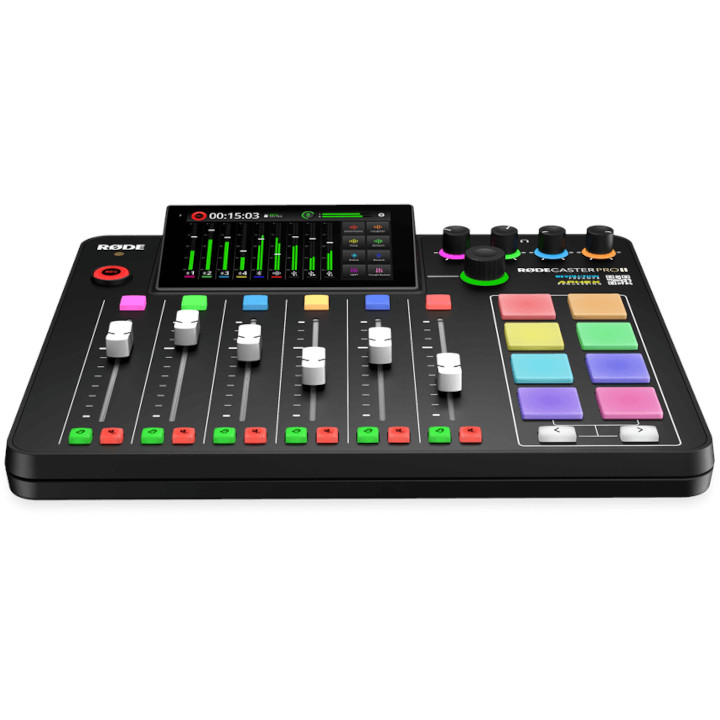
Content creators will be in their element with this powerful audio production studio. Combine high-quality XLR microphone inputs with the smart pads to use live effects and sound bites, creating a professional-grade podcast or livestream.

Ben is a Senior Editor at Windows Central, covering everything related to technology hardware and software. He regularly goes hands-on with the latest Windows laptops, components inside custom gaming desktops, and any accessory compatible with PC and Xbox. His lifelong obsession with dismantling gadgets to see how they work led him to pursue a career in tech-centric journalism after a decade of experience in electronics retail and tech support.



